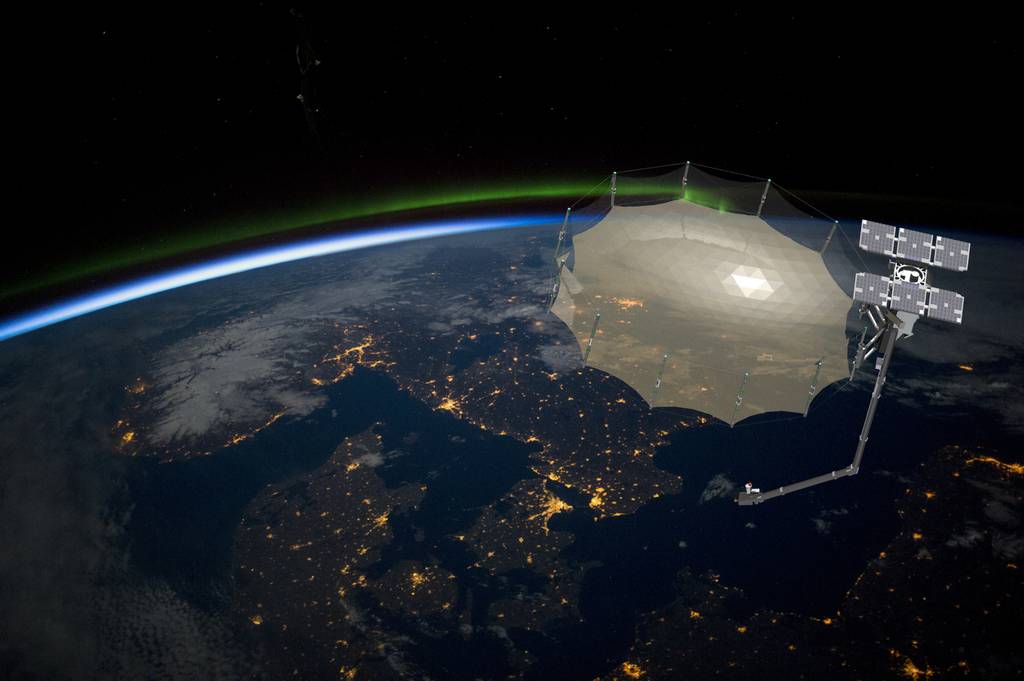Capella released the design for its new Sequoia satellite design Jan. 21, giving observers a first look at the new satellite the company plans to use to provide synthetic aperture radar (SAR) data to the Air Force and the National Reconnaissance Office.
Unlike traditional satellite imagery produced with optical sensors, which can be degraded or denied by adverse lighting conditions or weather, SAR uses radar to provide imagery day or night, regardless of the weather or cloud cover. Additionally, SAR sensors can provide data on material properties, moisture content, precise movements, and elevation, meaning that SAR can be used to build 3D recreations of a given geographical area.
Both the Air Force and the NRO have awarded contracts to Capella. The Air Force wants to use SAR for virtual reality software, missile defense and developing predictive intelligence to foresee foreign threats, awarding a contract to the company in November. Meanwhile, the NRO issued a commercial study contract the company in December as part of its efforts to diversify what types of imagery the agency purchases from commercial companies.
Those contracts were issued before the company has launched its fleet of SAR satellites. While Capella executives hoped to have satellites on orbit by the end of 2019, its first commercial satellite now won’t launch until March, with six more to follow later in the year. Ultimately, the company expects a full suite of 36 satellites on orbit.
Now the company has revealed its design for its satellites, which the company said was revised based on lessons learned from its testbed satellite and customer feedback. The design allows the satellite to collect sub-.05 meter images with a 3.5 meter deployed mesh-based reflector antenna combined and a high power radar. It also enables continuous imaging over long distance—up to 4,000 km—using advanced thermal management systems.
The new satellite will also be able to utilize real-time tasking through an encrypted two-way link with Inmarsat, technology provided by Addvalue, and Amazon Web Services’ Ground Station network. Addvalue terminals on Capella’s satellites will be able to communicate with Inmarsat’s global L-Band communications satellites directly, meaning customers can pass their tasking orders through Inmarsat’s satellites instead of waiting hours for a Capella satellite to pass over a ground station. The company claims this allows them to delivery imagery within 30 minutes of collection.
“Our customers have spoken: today’s industry standard of waiting eight hours to receive data is woefully outdated. They want access to imagery that is reliable, timely and, most importantly, high-quality,†said Christian Lenz, vice president of engineering at Capella Space, in a press release. “
Nathan Strout covers space, unmanned and intelligence systems for C4ISRNET.








